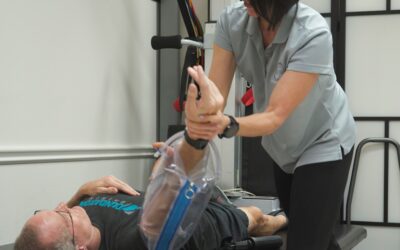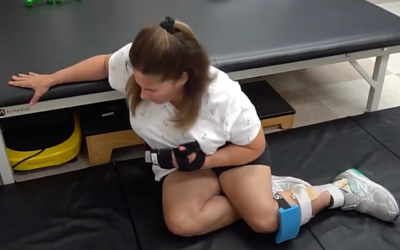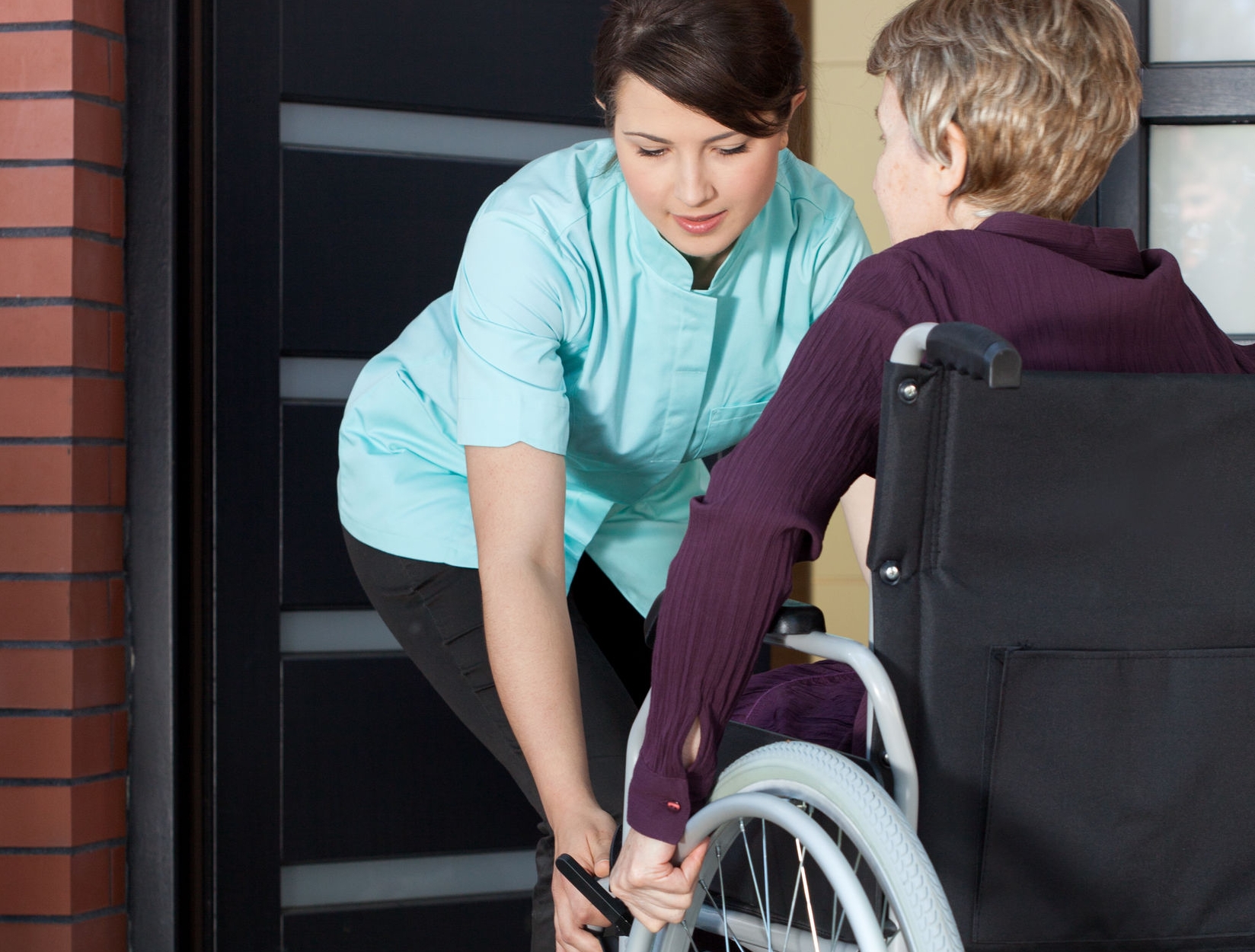How Can You Tell If It’s Spasticity or Weakness After Stroke?
If you’ve had a stroke, you’ve probably heard a few of these words tossed around: spasticity, weakness, stiffness, foot drop. They might all sound similar, but they each tell a different story about what’s going on in your muscles and your brain.
Knowing the difference isn’t just medical jargon, it’s the key to picking the right exercises, making faster progress, and feeling more in control of your recovery.
1. Spasticity: When the Muscle Contracts Without Your Permission
Spasticity is an involuntary muscle contraction caused by damage to the brain or spinal cord.
It’s what we call velocity-dependent, meaning the faster you try to move a muscle, the stronger the resistance you feel.
So what does that feel like?
Maybe your arm suddenly tightens when you try to move it fast, or your ankle resists when you try to lift your foot. Sometimes it feels fine, and other times, it stiffens up for no reason.
Inside your body, this happens because there’s too much voltage. Too many signals telling your muscles to contract, and not enough signals telling them to relax.
Terms in Physical Therapy to Describe Movement
Understanding the language your therapist uses can help you better recognize what’s happening in your body. Here are a few key terms:
-
Clonus: a set of involuntary and rhythmic muscular contractions and relaxations. It’s often a sign of certain neurologic conditions involving the brain or spinal cord, particularly those that affect motor pathways. It can cause the foot to point downward repeatedly or “bounce.”
-
Toes curling: when the toes involuntarily bend or point downward due to increased muscle tone.
-
Ballistic movements / jerky movements: sudden, uncontrolled muscle contractions where the muscle either fires fully or not at all, no smooth in-between control.
Common signs of spasticity include:
- Scissoring or leg swinging when walking
A spastic muscle isn’t a strong muscle. It’s overactive and uncoordinated, which can make movement feel out of your control.
How to Help Spastic Muscles Relax
Managing spasticity is all about turning the voltage down and calming the nervous system. Here’s how you can help that process:
- Low-stimulation environment: Try doing your therapy or stretching somewhere quiet and calm. Too much stimulation can make spasticity worse.
- Inhibition strategies: Focus on relaxation exercises like deep breathing, slow movements, and gentle holds.
- Move and stretch slowly: Fast stretches increase resistance; slow ones promote relaxation.
- Weight-bearing: Standing stretches or gentle pressure through the affected limb help calm muscle overactivity.
- Sensory input: Tools like a vibration plate or a massage gun can help reduce spasticity.
Important: If you’re using an AFO (ankle-foot orthosis) talk with your medical provider or therapist to make sure it fits your needs safely.
2. Weakness (Hemiparesis): When the Brain Loses Its Connection
Weakness after a stroke or what therapists call hemiparesis, feels more like a floppy limb.
Your arm or leg may just hang there, or your foot might dangle and drag when you walk.
This isn’t just a muscle problem. It’s a neural network issue. Your brain has lost some of the automatic pathways that control movement.
The good news? Those pathways can be rebuilt through repetition.
Every time you move that limb with focus and intention, you’re helping your brain lay down new “tracks.”
Rebuilding movement takes patience, but it’s absolutely possible. Even slow progress means your brain is reconnecting.
3. Stiffness: When Muscles Shorten Over Time
Stiffness is different from spasticity. It’s not caused by the brain sending too much signal, it’s a muscle issue that develops from staying in one position for too long.
When a muscle isn’t stretched enough, it adaptively shortens. You might notice your arm doesn’t straighten all the way or your ankle feels tight.
To improve stiffness:
- Use prolonged stretching. Gentle, consistent holds that encourage the muscle to lengthen.
- Consider splinting or braces to support proper positioning.
- For the ankle, an AFO with a plantar flexion stop can prevent contractures and keep the foot from pointing down.
- If you already have a contracture, your therapist may use a wedge under the AFO to safely support your foot position. Always check with your clinician before making adjustments.
Putting It All Together
Let’s recap:
- Spasticity – This happens when your muscles are overactive, sending too much “voltage.” The focus here is on relaxation: slow, controlled movements and calming your nervous system can help manage it.
- Weakness (Hemiparesis) – This occurs when neural connections are lost, making movement difficult. Retraining the brain with repetition and focused practice is key to rebuilding strength and coordination.
- Stiffness – Muscles that have shortened due to immobility can feel tight all the time. Gentle, prolonged stretching along with proper support, like splints or braces, can help restore mobility.
You might have one, or you might have a mix of all three, and that’s okay. The important thing is knowing why something feels the way it does so you can choose the best exercises for your body.
If you’re still unsure whether what you’re feeling is spasticity, weakness, or stiffness, don’t guess alone. Talk with your physical or occupational therapist. Understanding what’s going on in your body is the first step to making real, lasting progress.
And remember, recovery is not about being perfect. It’s about being consistent, curious, and patient with yourself. Every stretch, every repetition, every effort you make brings your brain and body closer to working together again.
Take Control of Your Rehab
Understanding these differences is the first step toward effective recovery. If you want guided support, personalized exercises, and a community to keep you motivated, check out our Membership Plans here. Get access to our full exercise library, monthly Q&As, and tools to help you move better and feel stronger every day.
Supplemental Videos
Articles you may be interested in
What is Stroke Rehabilitation?
Most likely you or someone you know will require stroke rehabilitation in their lifetime. The fact is, 700,000 people suffer a stroke each year (in the US) and two-thirds will survive. Of those who survive, post-stroke rehabilitation is critical. What is Post-Stroke...
Stroke Walking Aide: Product Guide
Re-learning how to walk after a stroke can be challenging. And finding the best walking aid can be one of the most critical decisions when it comes to regaining your independence. But with so many different options on the market, how do you choose? Well, you are in...
Getting up from the floor: Advanced
Getting up from the floor is an invaluable skill to have in your mobility "toolbox". First, it offers peace of mind knowing that if you ever find yourself (unintentionally) on the floor, you could help yourself. Second, getting on the floor (and getting back...
Returning Home After a Stroke
So, you finally get the great news you have been waiting for. You are FINALLY returning home after your stroke. But is it? I mean, IS it good news? Am I ready to take care of myself? Can I take care of myself? If you...






